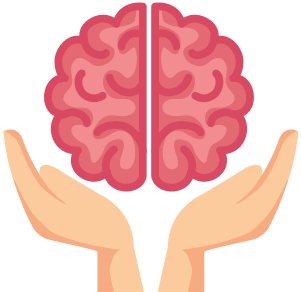If you suspect you or a loved one may have BPD, taking a borderline test can be a helpful first step. A borderline test is a screening tool that assesses the likelihood of displaying symptoms of BPD. It consists of a series of questions related to common experiences among people with BPD, such as intense emotional highs and lows, unstable relationships, and impulsive behaviors.

On average you will need to go through on average 20 questions and in some cases you might need to ask a family friend for help.

BPD is diagnosed by a licensed mental health professional through a clinical interview and assessment of symptoms. However, taking a borderline test can be a useful first step in identifying potential signs of BPD and deciding whether to seek professional help.
Our BPD online test is quick, private, and completely free. It can be taken online from the comfort of your own home, without the need for a referral or appointment. It's important to note that our test is not a diagnostic tool and cannot replace a clinical evaluation by a licensed mental health professional.
Our BPD test online free is an easy-to-use and accessible screening tool for those who want to determine if they may be experiencing symptoms of Borderline Personality Disorder. The BPD quiz free is designed to provide preliminary insights and help you decide whether to seek professional help for a full evaluation. Remember that a free borderline personality disorder test online is not a diagnostic tool and should not replace a thorough assessment by a mental health professional.

According to research, approximately 83% of people diagnosed with BPD have at least one additional psychiatric disorder, while 42% have two or more. Common Comorbidities include depression, anxiety disorders, substance abuse disorders, eating disorders, and post-traumatic stress disorder (PTSD).
Depression is often found to be a comorbidity with BPD, with nearly 75% of those with BPD also experiencing symptoms of depression. Anxiety disorders, including generalised anxiety disorder and social anxiety disorder, are also commonly seen in individuals with BPD. Substance abuse disorders, including alcohol and drug addiction, are also common comorbidities for individuals with BPD.
It's important to be aware of these related conditions as they can often impact the
severity of BPD symptoms and treatment options.

Borderline personality disorder (BPD) is a mental health disorder characterized by intense emotional highs and lows, impulsive behaviour, and unstable relationships.
BPD is diagnosed through a clinical interview with a licensed mental health professional. The mental health professional may also use assessment measures and talk to the person's previous healthcare providers and family and friends.
Common symptoms of BPD include fear of abandonment, unstable relationships, unclear or shifting self-image, impulsive and self-destructive behaviours, self-harm, extreme emotional swings, chronic feelings of emptiness, and explosive anger.
BPD is diagnosed on the basis of a pervasive pattern of instability of interpersonal relationships, self-image, and affect and marked impulsivity beginning by early adulthood and present in a variety of contexts, as indicated by at least five of nine criteria.
BPD can be managed, but it may not go away. While BPD has historically been seen as a lifelong, very disabling mental health condition, recent research is challenging this assumption. Now it appears that there may be a positive trajectory over time, with many of the most troubling symptoms remitting during the first few years. Unfortunately, other symptoms may remain for longer periods.
About 1.4% of adults in the US have BPD.
An estimated 75% of people diagnosed with BPD are women.
Diagnosing BPD typically takes one or two sessions, but because BPD can be confused with other disorders, getting the correct diagnosis can take some time.
Online therapy can be an effective treatment for BPD as long as the therapist or mental health provider has experience and training in this condition. BPD is often treated with Dialectical Behavior Therapy (DBT), Cognitive Behavior Therapy (CBT), and Psychodynamic therapy, and medication may also be prescribed to address specific symptoms.
BPD is characterized by intense emotional highs and lows, and can make someone feel very anxious, depressed, and unstable. People with BPD may have mood swings, unstable relationships, view things in extremes, and have rapidly shifting opinions of other people. They may also engage in impulsive, self-destructive behaviors and experience chronic feelings of emptiness.
BPD symptoms can be similar to or overlap with other mental health problems, such as bipolar disorder, complex post-traumatic stress disorder (C-PTSD), depression, anxiety, psychosis, and antisocial personality disorder (ASPD). It is important to seek a thorough assessment from a licensed mental health professional to receive an accurate diagnosis
A BPD screening is a preliminary assessment to help identify potential signs of Borderline Personality Disorder. It usually consists of a series of questions related to common symptoms and experiences among people with BPD. While a BPD screening can be a helpful first step, it is not a diagnostic tool and cannot replace a clinical evaluation by a licensed mental health professional.